Today, we discuss the topic of digester tankage, otherwise known as anaerobic digestion tanks.
Small Home/ Domestic Biogas Digester Tankage
In this article, we start at the smallest scale of anaerobic digestion plant tankage, those being for single houses up to community-scale AD plants. Although time-honoured designs of buried AD plants, constructed in masonry, remain popular in the developing nations these seldom if ever appear in the developed world.
In the developed world, the flexible plastic membrane is used for the smallest designs, while steel and concrete tanks prevail for the larger biogas tank sizes.
Smaller units for your backyard work with your biowaste garbage in the same way as do the huge digesters for sewage treatment plants, and large farms,.
All Anaerobic digestion plants from sewage works to the big farms that create biogas with manure from their farm animals use the same bacteria. The process runs through the three steps of anaerobic digestion in the same way.
Examples of suppliers of small scale biogas tanks are HomeBiogas with a plastic self-assembly system to the Puxin (China) small home-use mini biodigester. Puxin supplies tanks ranging in size from the smallest home biogas/ back yard kits up to full-scale commercial steel circular tanks.
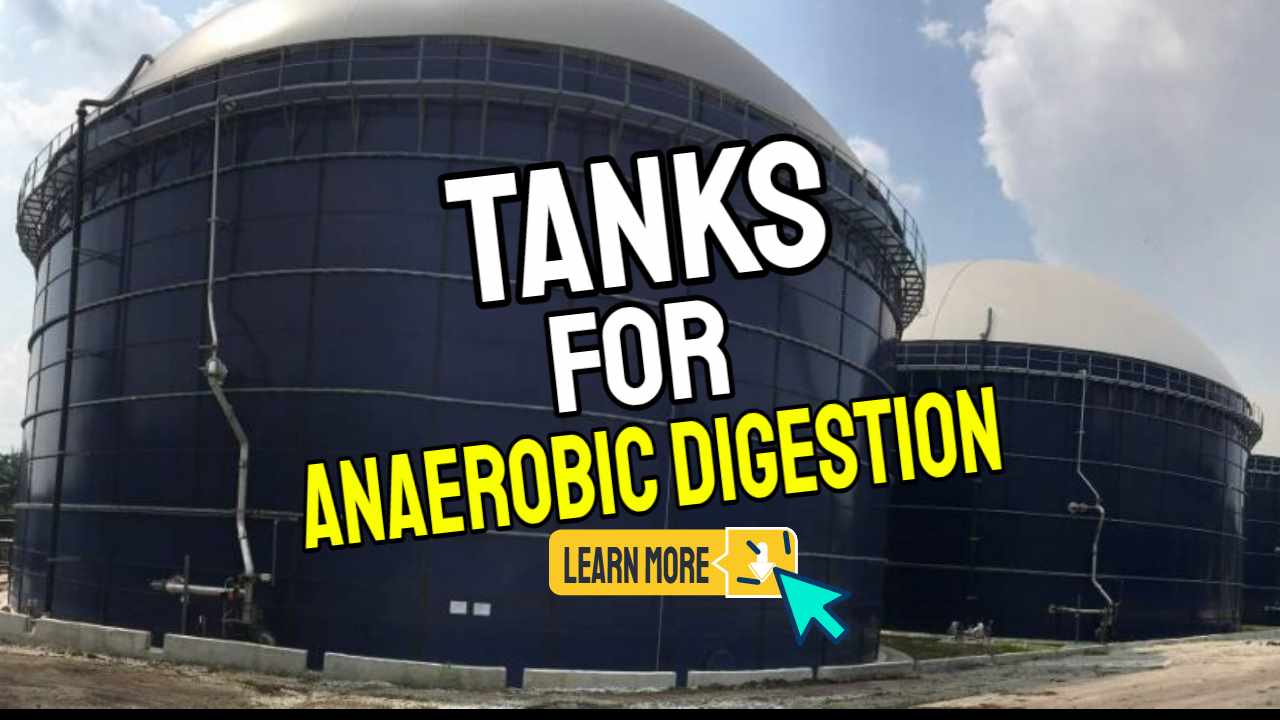
Large Commercial Scale AD Tanks
Anaerobic digestion tanks for full-scale commercial AD plants are large, usually circular in plan, and very distinctive. Distinctive for the flexible gas storage covers on top of the steel structure. These are cone-shaped or spherical and supported at the centre with a single pole.
Anaerobic digestion tanks are airtight tanks that may be purchased in various sizes and designs. Most often used are Glass-Fused-to-Steel tanks for mesophilic digestion, thermophilic digestion, pasteurising digesters, and intensified enzymic hydrolysis in digesters.
An Anaerobic digester tank is, in essence, a liquid storage tank that is used for the digestion (fermentation) of stored biowaste slurry and wastewater solids into simpler compounds and, in turn, releases methane-rich gases, which are then either used as biofuel or used to generate electricity.
The complex slurry, sludge, and wastewater stored in digester tankage includes sewage sludge, farm wastes, food waste, fish waste, municipal waste, organic industrial waste, etc.
They are manufactured and installed by a small group of specialist contractors. Tank bases are usually designed and constructed by the EPC infrastructure contractor, usually a civil engineering contractor.
The choice of a modular design of steel tank panels enables a wide range of aspect ratios, process pressures, and temperatures to meet a wide range of AD processes, designs, and applications. Additionally, by including double-membrane coverings, Glass-Fused-to-Steel tanks may be extended upwards utilising flexible plastic membranes for biogas storage.
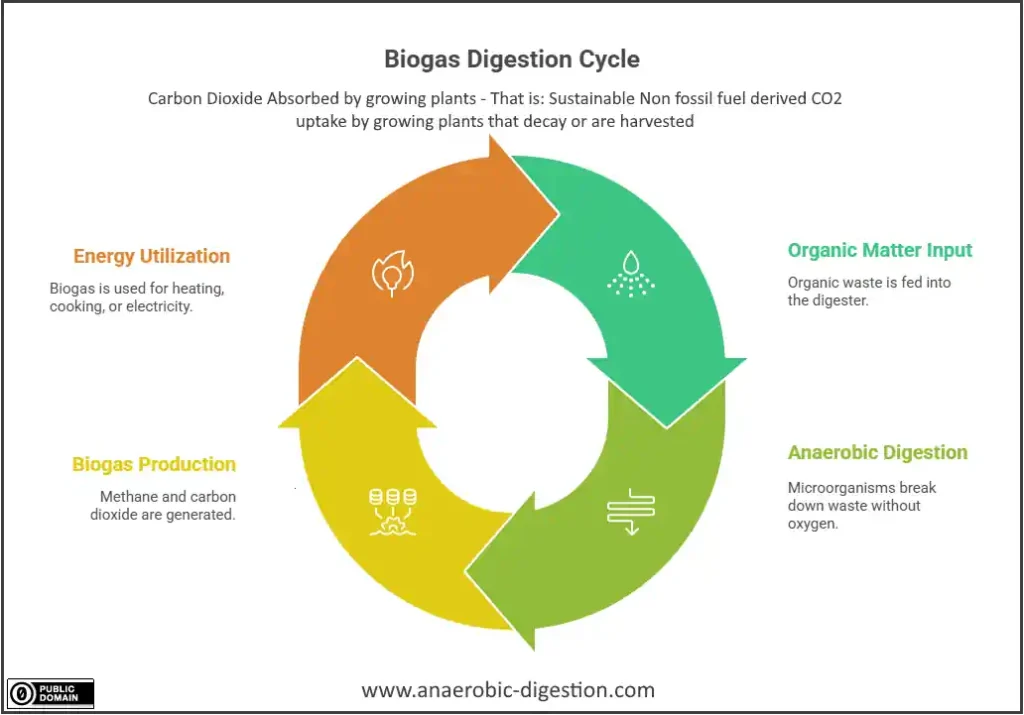
List of Anaerobic Digestion Tank Contractors
The following is a list of anaerobic digestion tanks, supply and erection, and contracting companies:
Center Enamel
Since the late 1980s, Shijiazhuang Zhengzhong Technology Co., Ltd (Center Enamel) has been a professional producer specialising in the design and construction of bolted storage tanks.
Glass-Fused-to-Steel (GFS) tanks, stainless steel tanks, enamelled cookware, and enamel glazing are all part of their product line.
Center Enamel Co., Ltd is a key supplier and erector in Asia's bolted tank sector, with a competent enamelling R&D team and more than 20 enamelling patents. ISO 9001, NSF/ANSI 61, ISO 28765, LFGB, BSCI, ISO 45001, ISO 24001, and other international standards have been achieved by the firm.
Tank Connection (Cectank)
Tank Connection's RTP (rolling, tapered panel) bolted storage tank design is coated with LIQ Fusion 8000 FBETM, which has been proven to show its unmatched in-field performance in anaerobic digester applications.
The designers at Tank Connection take into account a wide range of parameters that should be considered in digester applications. This includes hazard-zoning considerations for methane explosions, as well as planning for operational temperature management in all available design configurations.
All anaerobic digestion tank designs must take corrosion into account. pH (acidity levels), working environment, and building materials are among them.
The experts at Tank Connection also adhere to all necessary rules in order to fulfil local planning requirements. These include thermal expansion tolerances, chemical resistance, and acceptable design requirements.
The LIQ Fusion 8000 FBETM, developed by Tank Connection, is a high-performance powder-on-powder coating that the company claims is unequalled in biogas applications.
Within the vapour zone, Tank Connection may also deliver tanks with purely corrosion-resistant stainless steel construction components.
Octaform
Building contractors can use Octoform, a proven PVC stay-in-place concrete forming method that is regarded as excellent for the construction of high-performance tanks.
Stortec Digester Tankage
Steel bolted tanks with glass (enamelled) coating, hot deep zinc galvanised, and stainless steel are all produced by Stortec Ltd. They offer and supervise the installation of bolted steel and concrete tanks all around the world.
The founders of Stortec founded the firm more than 30 years ago. Their specialised teams aim to provide a “collaborative approach.”
Balmoral Tanks
Balmoral Tanks designs and manufactures one of the most comprehensive digester tankage product lines accessible from a single source in the world.
CST Aquastore Digester Tanks
The Aquastore tank designs by CST include industry-accepted standards to provide high-quality, long-lasting digester tanks.
Digester Tankage Must be Airtight
As we mentioned earlier, your tank must be airtight to prevent gas from leaking out of it and going to waste. Ensuring that your tank is completely airtight will also prevent foul smells from being released and ultimately ensure that your biogas digester is working properly.
In the slurry-preparation area, there must be enough water. This might be accomplished by installing an above storage tank large enough to contain the dilution water required each time the digester is fed.
Feeding the Biogas Plant for the First Time
The majority of the water supplied by municipalities and water supply utility enterprises has been chlorinated. Chlorinated water kills all microbes; therefore, don't use it.
If you only have access to chlorinated water and are commissioning a home biogas plant, leave the needed quantity of water exposed to the air overnight and agitate thoroughly to allow the chlorine to evaporate.
Some gas formation will start after anything from two days to a few weeks, after feeding the digester with cow dung slurry. Don't try to ignite at first.
Fixed-dome Biogas Tank
The fixed-dome tank is a type of biogas plant that has gained popularity in Asia.
The fixed dome plant has several advantages, including a simple design, minimal moving components, low construction costs, and low maintenance.
Bolted Steel Tank Design
Vertical tanks (storage silos) are a form of Digester Tankage based upon a simple bolted steel tank design to:
- Take feedstock through a pipe on one side of the tank
- whilst digestate flows out through a pipe on the other side.
A more viscous (more solid) feedstock is utilised as a ‘plug' in horizontal plug-flow systems, and it flows through a horizontal digester at the rate it is supplied.
Vertical digester tankage can be easy and inexpensive to run, however, the fully mixed feedstock particles may not spend enough time in the digester before being taken out as digestate.
Horizontal plug flow process tanks are more expensive to build and run, but the feedstock will not leave the digester too soon or for an inordinately long time.
Digester tankage can be customised to include fittings for mounting mixers in the sidewall or roof, as well as the choice of permanent or membrane roofs. Bolted tank systems come in a variety of forms. Epoxy-coated carbon steel tanks, stainless steel tanks, or a mix of epoxy-coated carbon steel and stainless steel tanks can all be used.
Anaerobic digestion tank systems made of bolted sectional steel range in size from 9 to 100 feet in diameter and 5 to 110 feet in height. Concrete or steel flooring, bolted or welded, can be installed in tanks.
Glass-fused Steel AD Tanks
Under regular warm to hot climatic temperatures, anaerobic digestion occurs. In colder areas, costly insulation upgrades are required for optimal biogas generation.
Biogas digesters come in a variety of shapes, sizes, and materials, but storing raw biogas is typically not a problem.
You create the biogas storage tank with the coating materials that you select to make the storage structure out of, whether it's on top of a tank or on the ground.
Bolted tanks made of glass-fused steel (or enamelled steel) are a premium breakthrough technology designed for long-term performance with little maintenance.
Not only are these tanks the most popular for biogas digesters because they combine the durability of steel with the corrosion resistance of glass, but they are also the quickest to erect.
Types of Biogas Digester Tanks
There are three types of continuous digesters:
- vertical tank systems,
- horizontal tank or plug-flow systems, and
- multiple tank systems.
Proper digester tankage design, operation, and maintenance of continuously stored digesters (CSTRs) produce a steady and predictable supply of usable biogas, best suited for subsequent further processing for purification.
There are several varieties of digester tanks that use various materials, but they always convert organics into biogas and digestate in the same way. Biogas is largely made up of methane and carbon dioxide, with traces of hydrogen sulphide, nitrogen, and other chemicals thrown in, in small quantities.
Types of Gasholders for Biogas Plants
There are several types of anaerobic digestion (biogas) gasholders that have been designed to make efficient use of biogas.
The gasholder's primary requirement is that it be gas-tight. In fixed-dome biogas facilities, floating gasholders are kept in place by a guide rail. The compensatory tank is used to store the slurry that is displaced by the biogas.
The biological process that transforms organic waste into biogas is consistent across all models, regardless of input, output, size, or type.
Customized Bolted Steel Tanks
For biogas facilities (anaerobic digesters), glass-fused-to-steel bolted tanks are a preferred choice for many plant operators. The Everstore® glass-fused-to-steel tanks from Uig are a good example of what may be an ideal option for anaerobic digester applications.
For biogas generation, many people employ customised bolted steel tanks and biogas plant storage tanks. Biogas storage tanks contribute significantly to the development of renewable energy and, as a result, to environmental conservation.
Most glass “fused to steel” tanks commonly offer:
- A service life in excess of 30 years.
- Low project cost.
Bolted steel tanks are substantially lighter than other typical tanks, such as concrete tanks, and can thus be transported more readily and at a cheaper cost.
Fibreglass Reinforced Plastic Tanks
Until fibreglass reinforced plastic (FRP) was effectively introduced to tackle the problem of corrosion, one or two digester tank installations were built of mild steel.
Day, dike, raised, holding, pump, receiver, reservoir, sub-base, tower, and aboveground or subsurface storage tanks are all examples of FRP tanks. Metal, concrete, fibreglass, plastic, PTFE, and wood are among the other materials offered.
Fibreglass Reinforced Plastic is commonly used to construct biodigester septic tanks. The rationale for this is that, in comparison to other materials like plastic and brick, it is significantly tougher and less prone to leak.
CST Storage – HydroTec Tanks
For all sorts of digester applications, CST offers a full variety of storage tanks and coverings. CST also offers buyers the option of customising their digester vessel with a variety of coating processes and alloys to fit their individual process requirements.
Their glass-fused-to-steel CSTR tank design service is mostly for large-scale biogas storage, industrial effluent treatment, and municipal sewage and wastewater treatment.
Digester Tankage FAQs
1. What is digester tankage?
Digester tankage plays a crucial role in various industries by facilitating the breakdown of organic materials through a controlled process.
2. How does digester tankage work?
Digester tankage works by creating an environment that promotes the decomposition of organic matter, resulting in the production of biogas and other byproducts.
3. Why is digester tankage important for businesses?
Digester tankage is essential for businesses looking to improve efficiency, reduce waste, and minimise environmental impact in their operations.
4. What are the different types of digester tankage available?
There are various types of digester tankage systems, including anaerobic digesters, aerobic digesters, and continuous flow digesters, each with its own unique benefits and applications.
5. How can businesses benefit from investing in digester tankage?
Investing in digester tankage can lead to cost savings, increased productivity, and a more sustainable approach to waste management for businesses.
6. What should businesses consider when installing digester tankage?
Businesses should consider factors such as space requirements, regulatory compliance, and ongoing maintenance when planning for the installation of digester tankage systems.
7. How can our company help you resolve your digester tankage solutions?
Our company offers a range of digester tankage solutions tailored to meet the specific needs of businesses, with a focus on quality, reliability, and customer satisfaction.
[Published 6 November 2021. Updated with Infographic July 2025.]


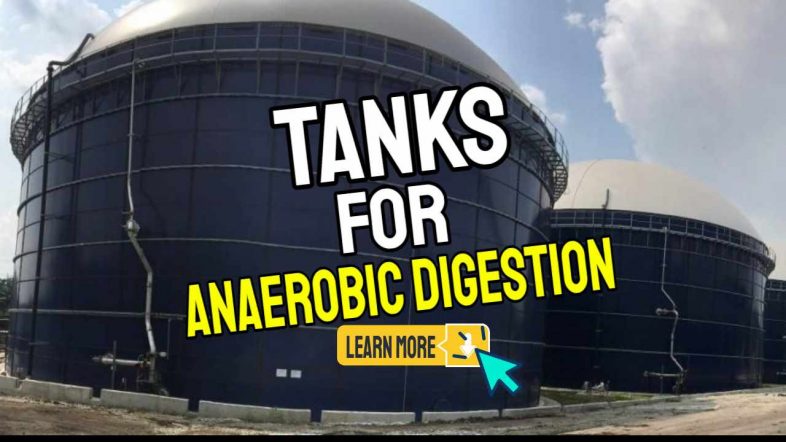
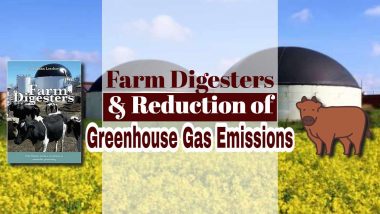
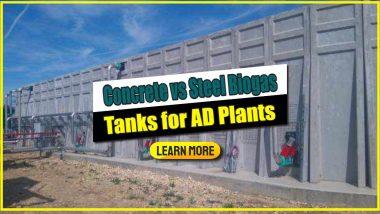

Could you please explain how to choose the size of the centre column support channel or pipe something?